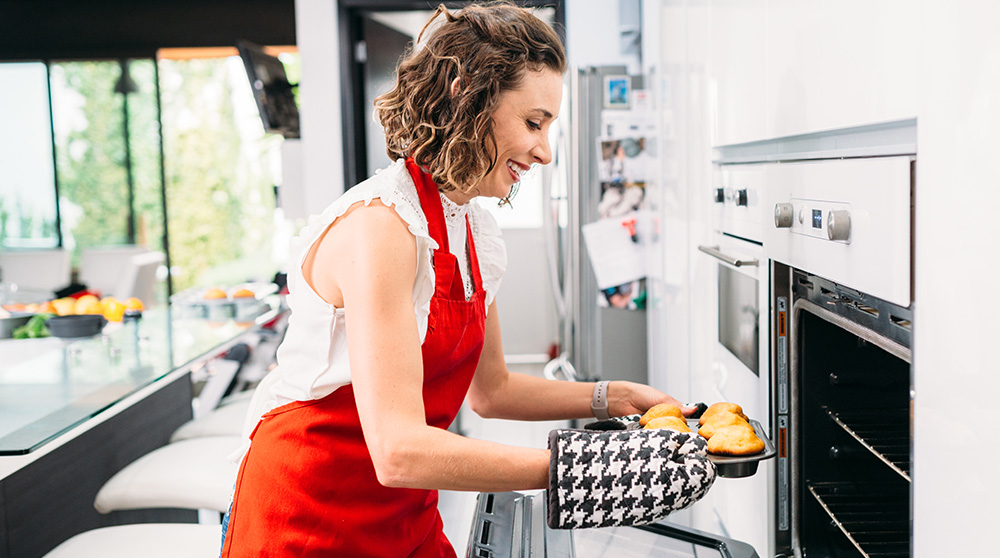How to avoid 5 common kitchen disasters.

Whether you’re whipping up dinner or cooking a multi-course holiday feast, kitchen disasters can happen. Luckily, following our expert tips and being proactive can help stop accidents before they occur. Wondering what the top five most common kitchen disasters are? Learn them all and how you can safely avoid them.
Slips and falls
Clean up spills as soon as they happen.
Check the floor before and after cooking to ensure there are no peels, puddles, or other slippery items underfoot.
If you have a slick floor material in your kitchen like tile or polished wood, consider adding a rug or nonslip mat.
Cuts from kitchen knives
Keep your knives in a block or in a separate container within a kitchen drawer.
If you have kids, make sure your knife block or drawer is well out of their reach or has a secure lock mechanism.
Surprisingly, another way to avoid kitchen disasters from cuts is to keep your knives sharp. Dull knives can slip off the surface of what you’re trying to slice or chop and cut your hand instead.
Burns
Choose your clothing wisely to prevent kitchen disasters. Long, flowy sleeves, scarves, and ties can drag over a hot burner and catch fire or dip into a boiling pot of water. Wear sleeves that are tight to your wrists and remove loose items.
If you have long hair, tie it back before cooking.
Choose oven mitts that go over your entire hand and wrist rather than using a folded dish towel or smaller oven mitt.
Create and enforce a kid-free zone of at least three feet around the oven and stove when they’re in use.
Teach kids what’s hot and what’s not in the kitchen.
Cook only when you’re alert. Avoid using appliances if you’re drowsy or after a night out.
Electrical issues
Don’t overload your outlets and never use extension cords in your kitchen.
Unplug small appliances when they’re not in use. Faulty wiring in things such as your toaster or coffee machine can spark a fire any time they’re plugged in.
Retire old appliances. If items or their cords show any signs of damage, sparks, exposed wiring, or excessive heat, don’t use them.
Have an expert come out for a regular electrical safety inspection.
Kitchen fires
Keep appliances clean and in good condition. Crumbs in the toaster or gunk left in the microwave or oven can catch fire. Safely clean appliances according to the manufacturer’s instructions. If your appliances are acting up — say, making an odd noise they weren’t making before — stop using them immediately and call an expert.
Keep towels and oven mitts away from the stove. Both cloth towels and paper towels can catch fire easily if left too close to a burner. The same goes for cardboard and plastic packaging from food.
Never leave pots or pans unattended when they’re being used.
Keep pot handles turned toward the center of the stove so no one bumps into them.
Get a kitchen fire extinguisher and know how to use it. Check the pressure gauge monthly to make sure the needle is in the green area. If it’s not, replace it. Also, replace your fire extinguisher if there are cracks in the hose or handle, or if the nozzle is blocked with debris.
If a fire starts in the oven or microwave, close the appliance’s door immediately. The lack of oxygen should stifle the fire. If the fire doesn’t seem to be dying down, call 911.
If a pan catches fire, use a potholder or oven mitt to clap a lid on it and take it off the burner. If you don’t have a lid, use your fire extinguisher.
Never pour water on a grease fire. It can make things worse. Instead, douse the flames with baking soda or salt, but don’t use flour as it can explode.
The most common kitchen disasters can be avoided with the help of these tips. And for even more protection and peace of mind, talk to a local, independent agent today about our comprehensive home insurance policies.







